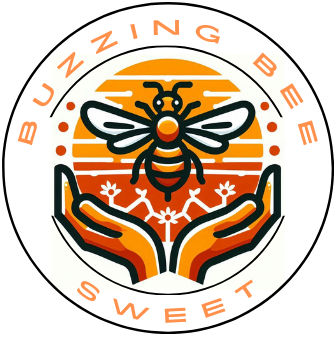Regular beehive inspections are your ticket to keeping those tiny buzzing buddies healthy and happy. It’s all about catching any problems early so they don’t snowball into big ol’ hive disasters. Think of it as a bee health check-up.
Timing is everything, folks. Just like you don’t wanna wake them bees up in the middle of the night, you can’t just inspect whenever you feel like it. Good times? When it’s warm, calm, and sunny. The bees are out and about, making inspection as smooth as a spoonful of honey.
Gear up right. Bee suits are a must – looking like a ghostbuster is a small price for not getting stung. You’ll need a smoker too, calming the bees so you can work your magic without a swarm attack. Don’t forget a hive tool; it’s like the Swiss Army knife of beekeeping.
A checklist can be your best friend. Seriously, jotting down what you need to inspect – from queen sightings to honey stores – helps you not miss a beat. This step keeps things running like clockwork and makes you look like a pro even if you’re just starting out.
What to Look for During a Beehive Inspection
Spotting your queen bee is like finding a needle in a honey-soaked haystack, but it’s crucial. She’s the heart of the hive, and her health determines how well the whole show runs. Look for her among the workers, and check if she’s laying eggs properly. No eggs, no future bees, and that’s a problem.
Brood patterns are the hive’s diary. A strong, healthy brood nest means happy bees. Keep an eye out for solid, consistent patterns. If things look spotty or patchy, it might signal trouble – like diseases or a missing queen.
Speaking of trouble, diseases and pests are the party crashers you definitely don’t want around. Look for signs like weird larvae or unnatural behavior among the adult bees. Mites, beetle larvae, and other pests can ruin the day. Catch them early, nip the problem in the bud with preventive measures.
The hive’s activity level shows its mood. Sluggish hive? It could mean they’re sick or lacking resources. A vibrant, busy hive is what you’re after. Make notes on how much food (aka honey and pollen) they have stored because hungry bees are unhappy bees.
Steps to Conduct a Thorough Beehive Inspection
- Opening a hive isn’t about just diving straight in. Approach with calm and ease, keeping your moves slow and steady. The smoker’s your best buddy here, puff a bit near the entrance, let the bees mellow out, and then get started.
- Handling frames gently is an art. Carefully lift them, making sure not to squish any of the bee passengers. You’re looking for signs of health or trouble – the queen, brood, stores of honey and pollen. Take your time to examine each frame carefully.
- Jot down everything. Record keeping is more important than just jotting down what you see. You’re creating a historical record of the hive’s health. Dates, what you observe, any changes since the last inspection. This info helps when you’re troubleshooting later.
- Once you’ve got everything checked, adjust any components that need tweaking. Maybe your hive needs more space for honey, or you have to swap out some old frames. These little tweaks keep the hive humming along smoothly.
Post-inspection Actions and Maintenance
Addressing any issues you spotted during inspection is key. Found a pest problem? Take action with treatments specifically designed for beekeeping, ensuring they’re safe for the hive’s delicate balance. Disease signs like foulbrood need immediate attention to prevent them from spreading like wildfire.
Sometimes equipment needs a bit of love too. Frames broken? Hive box damaged? Repairs and replacements should be handled before they become problematic. A stitch in time saves nine, even in beekeeping.
As seasons change, so do your bees’ needs. Be ready to adapt based on the time of year. Plan for adequate ventilation in summer and insulation in winter. Regular checks and maintenance throughout the year prepare your hive for whatever Mother Nature throws at them.
Consistent tracking of your inspections and actions is like giving your future self a roadmap. Documenting what’s been done helps you recognize patterns and trends in your beehive, which helps make better decisions moving forward. No more flying blind!
This post may contain affiliate links.

What a fantastic and informative piece on beehive inspections! I love how you framed the inspections as a kind of health check-up for our buzzing friends. It’s such a relatable analogy that really drives home the importance of keeping an eye on our hives.
The checklist idea is brilliant! It’s easy to get lost in all the hustle and bustle, and having a clear plan helps ensure you don’t miss anything important. I can only imagine how daunting it can be for new beekeepers to keep track of everything, so your advice on what to look for during inspections is super helpful.
The proactive approach to dealing with pests and diseases is key, and I appreciate that you highlighted the importance of maintenance too. It’s like owning a car; regular checks and upkeep prevent bigger issues down the line.
Overall, your article is a wonderful reminder of the care and attention our bees deserve. With such thorough and practical advice, anyone can feel empowered to ensure their hive remains happy and healthy. Keep up the great work in spreading awareness about responsible beekeeping!
Hi Kavitha!
Thank you very much for your comments and kind words!
Yes, it’s important to take care of our small friends as well as our bigger ones, becuse they’re making wonders in the nature and our gardens.
/Mats